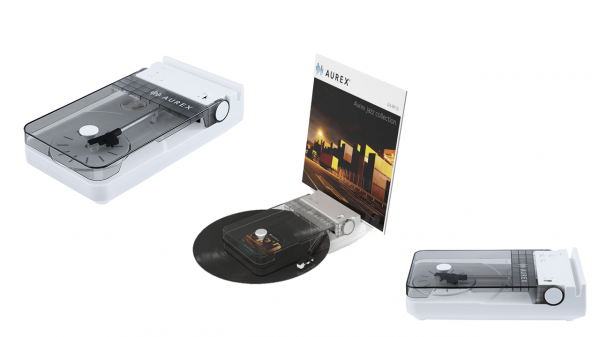Arlington, VA, September 1, 2005 – Digital cameras, flat panel displays, wireless communications devices and MP3 players continue to drive consumer electronics (CE) industry sales growth as evidenced in figures released today by the Consumer Electronics Association (CEA) in its revised U.S. Consumer Electronics Sales and Forecast Report. According to CEA Market Research, total CE factory-to-dealer sales in 2005 are projected to increase 9 percent on revenues of $123 billion. CEA also reported that final year-end figures indicate total industry sales grew 10 percent in 2004, totaling $113 billion in revenues.
“The consumer electronics industry continues to enjoy healthy growth and consumers are fairing even better thanks to competitive pricing and overall price deflation,” said CEA President and CEO Gary Shapiro. “While price declines and competition place pressure on profit margins, these factors also help drive total unit sales as consumers flock to join the digital era. With this in mind, we have upwardly revised sales projections for several product categories in our updated 2005 forecast report.”
CEA reported that some sales increases are coming as consumers make replacement or upgrade purchases, specifically pointing to the digital camera and wireless communications categories.
“Even with digital cameras now in 49 percent of U.S. homes, consumers are purchasing higher mega-pixel digital cameras as upgrades to their original digital cameras,” said CEA Director of Industry Analysis Sean Wargo. “We’re seeing a similar upgrade mentality with wireless communications handsets. Many consumers are opting for digital camera phones and smart phone devices as opposed to direct model replacement purchases. This demonstrates how established these products are in the lives of consumers.”
CEA reported in the Forecast Report that digital camera sales totaled 18.9 million units in 2004, representing $4.7 billion in industry sales. The revised forecast report shows an updated 2005 sales projection of 23.1 million units on an estimated $6.1 billion. The average digital camera unit price also is expected to increase from $251 to $265, whereas the flash media category is expected to experience a unit price decline. Despite the price decline, flash media is projected to produce $3.5 billion in sales in 2005 compared to $3.1 billion in 2004.
Wargo also noted that CEA upwardly revised MP3 projections based on continued consumer interest in portable audio products. Total MP3 sales are projected to reach 15.9 million units in 2005, compared to 7.1 in 2004. Satellite radio sales also are expected to do well in 2005, contributing to the audio and after-market categories.
“The computer category also will perform well in 2005,” Wargo added. “Seventy-three percent of U.S. households now own a PC and we’re seeing more consumers turn to laptops for their computing needs today. Twenty million PCs were sold in 2004 – laptops and desktops combined – and we project 21.8 million more will be sold this year. The average factory-to-dealer price for a PC today is $841. This is good news for consumers, especially during the back to school computer buying season.”
Consumers also will benefit from flat panel wholesale price declines, which Wargo attributes to manufacturing cost efficiencies and robust competition. The average LCD unit price will decrease from $857 in 2004 to $754 this year; the average plasma unit price is projected to decrease from $2,698 to $1,953. CEA expects plasma and LCD unit shipments to nearly double compared to last year as consumers enjoy the lower prices. LCD unit sales are projected to reach 3.9 million units on $3 billion compared to 1.8 million units and $1.6 billion in 2004. Plasma unit shipments are projected to reach 2 million and $3.9 billion, increasing dramatically over the 2004 volumes of 870,000 units and $2.3 billion.
“The CE industry certainly is delivering on the digital promise for consumers,” Wargo concluded. “Prices are competitive and digital products and innovations abound. It’s a great time to be shopping for consumer electronics.”
Data cited in this release is available for purchase through CEA’s Market Activity Reports and Analysis (MARA) program. With more than 500 reports published annually, the MARA program is recognized as the “authoritative source” for data on the consumer electronics industry. All CEA Market Research data is free to CEA members. Visit CEA Market Research via www.CE.org for more information.
About CEA:
The Consumer Electronics Association (CEA) is the preeminent trade association promoting growth in the consumer technology industry through technology policy, events, research, promotion and the fostering of business and strategic relationships. CEA represents more than 2,000 corporate members involved in the design, development, manufacturing, distribution and integration of audio, video, mobile electronics, wireless and landline communications, information technology, home networking, multimedia and accessory products, as well as related services that are sold through consumer channels. Combined, CEA’s members account for more than $121 billion in annual sales. CEA’s resources are available online at www.CE.org, the definitive source for information about the consumer electronics industry.
CEA also sponsors and manages the International CES – Defining Tomorrow’s Technology. All profits from CES are reinvested into industry services, including technical training and education, industry promotion, engineering standards development, market research and legislative advocacy.























